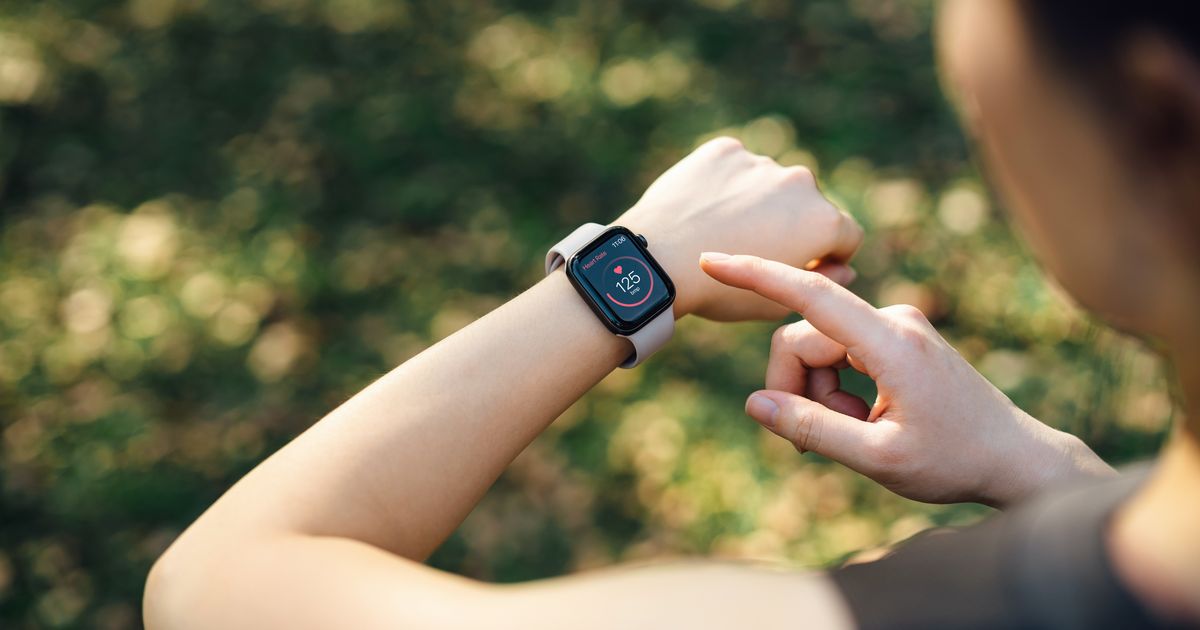Between Apple Watches and Fitbits, many people keep track of their heart rate during a workout. What appears on the screen for you could be completely different from the woman next to you in an exercise class. Heart rate ranges vary from person to person, which is completely normal.
Your heart rate range should be thought of as just that: a range. There’s no perfect number, stressed Dr. Peter Robinson, an assistant professor of medicine in the division of cardiology at UConn Health Medical Center.
“In general, the harder your intensity, the more you’re working out, the higher your heart rate,” he said.
But what if you notice a quickly increasing heart rate during a run or you observe that your heart rate isn’t as high as it once was? There are reasons for both of those things. Here, experts share what to know about your heart rate when you work out:
First, it’s important to understand what a healthy heart rate is for you
When it comes to a normal heart rate during a workout, it depends completely on the type of workout and the person, said Dr. Aaron Baggish, director of the cardiovascular performance program at Massachusetts General Hospital Heart Center.
“We all have an intrinsic zone that we live in — the top number [of our heart rate] is typically dictated by our age and our gender,” he said, adding that women tend to run higher than men by 10 to 15 beats per minute and that everyone’s heart rates tend to come down slowly over time starting around age 30 or 35. (“It goes down a couple beats per year,” Baggish noted.)
So, a healthy maximum heart rate varies greatly in people. In a 70-year-old runner, their max heart rate during a workout could be 140 or 150 beats per minute (BPM). For an 18-year-old athlete, their max may be 200 BPM.
To determine your maximum heart rate, use a simple formula
Since there is no standard, normal heart rate, Dr. Danny Eapen, a preventive cardiologist at Emory Healthcare’s Center for Heart Disease Prevention, suggests you use a calculation ― known as the Fox formula ― to determine what is likely healthy for you.
To get your maximum heart rate, simply subtract your age from 220. So, if you’re 38, you’d subtract 38 from 220 to get your max heart rate — which would be about 182 BPM.
And during a workout, you can use this number as a baseline to determine how intense of a workout you’re doing, he said. According to the Centers for Disease Control and Prevention, moderate-intensity exercise is 64% to 76% of your maximum heart rate and vigorous-intensity exercise is 77% to 93% of your max.
So, for a 38-year-old, a moderate-intensity heart rate would be roughly between 116 and 138 BPM and can be achieved through brisk walking, dancing, gardening and more.
If you do 150 minutes of moderate-intensity exercise each week, you’re meeting the American Heart Association’s physical activity recommendation. Those who meet the guidelines have a lower risk of heart disease, stroke and high blood pressure — among other benefits.
But, you probably don’t want to stay in your max heart rate range for too long
Eapen added that you don’t want to keep your heart rate at its max for too long simply because you likely won’t be able to maintain it for more than a minute or two.
But, if you’re specifically training for something, you can try interval training to bring your heart rate up to (or near) its maximum and then pull back the intensity to bring your heart rate back down.
So, try running for a two-minute interval and then walking for a two-minute interval, for example. “That is the best way to help condition muscles and increase aerobic exercise capacity,” he said.
MStudioImages via Getty Images
Additionally, certain factors can cause a higher heart rate when working out
According to Eapen, if you’re dehydrated, anemic or have high thyroid levels, you may notice an increased heart rate when you exercise.
People who take a pre-workout supplement can experience this, too, in addition to folks who are just starting a fitness journey. Their heart rate may trend higher initially as their body gets used to the work, Eapen explained.
“All of [these things] can raise your baseline heart rate and sort of exacerbate the exercise-related heart rate,” he said.
A heart rate that accelerates out of nowhere is worrisome
According to Baggish, it should be cause for concern if your heart rate accelerates without a good explanation.
If you’re at a light level of work and your heart rate “goes from something you can’t feel to something that feels like it’s beating out of your chest,” you should talk to a doctor, he explained.
From there, your doctor may set you up with a heart rate monitor for your workout, which will help them determine if what you’re experiencing is worrisome. Baggish added that our own heart rate perception can be flawed, which is why monitoring from a professional is necessary before jumping to any extreme conclusions.
Additionally, Robinson added that any abrupt drop in heart rate should be addressed by a doctor, too. These abrupt drops, he noted, can happen in a matter of seconds and should trigger a conversation with a doctor.
Certain symptoms are worrisome, too
Chest tightness, extreme shortness of breath, and lightheadedness at any level of activity is concerning, Robinson said.
“That tells me you’re pushing the limits beyond [what] your heart can handle [and] outstripping your heart’s ability to compensate,” he said.
If you notice these symptoms while you work out, it might mean that you have issues with the valves in your heart or that you’re pushing too hard.
“Those are all warning signs to back off,” he said. If these symptoms go away immediately, you should just note that level of exertion was too much. But, Robinson noted, if they don’t go away or begin happening at lower levels of exertion, you need to call your doctor.
He stressed that chest pain, particularly, is a big deal. If you’re having continued chest pain, you probably want to be seen ASAP, he said. There’s a low likelihood that this will occur during or after a workout, but, if it does, you don’t want to wait to see a doctor.

Viktorcvetkovic via Getty Images
It’s important to know your healthy heart rate range to determine what is normal for you
A heart rate of 200 BPM may be fine for a 20-year-old but problematic for a 70-year-old, Baggish noted ― no matter what exercise they’re doing.
What’s normal for you depends on your age, your gender and what your body is used to. “It all depends on the intrinsic range that you live in,” he said. “Certainly, there can be heart rates that are above the normal range, and in that situation, that’s an arrhythmia,” which is also known as an irregular heartbeat and is something cardiologists worry about.
There is a direct relationship between how hard you’re exercising and your heart rate. It’s crucial to understand what is normal for you so you can spot a potential irregularity (like if your heart rate uncharacteristically soars the next time you’re on a leisurely walk) so you can alert your doctor, he said.
Instead of a specific heart rate number, pay attention to changes
When keeping track of your heart rate (and all aspects of your body’s health, for that matter), “change and patterns are probably more important than anything else,” Robinson said.
For example, if you always do a certain amount of exercise and notice that your heart rate is increasing a lot faster than it usually does, or you’re extremely winded after your normal workout regimen, this could be a sign that something dangerous is going on, he noted.
Change of any sort is important for doctors to know about, Robinson stressed. Reporting a change in your health patterns can sometimes be the key a doctor needs to diagnose a problem.
This is potentially even more important now as many people are faced with the reality of long COVID or a bad COVID-19 infection that absolutely impacts their usual workout routine.
Overall, know what feels best to you
An increased heart rate during a workout is normal, and just because it hits a certain number doesn’t mean you’re at risk for any complications.
What’s most important is learning to understand your healthy heart rate range and how that interacts with the exercises you do most frequently.
If you’re feeling good after a heart-pumping workout and your regular fitness expectations are in line, you’re probably fine. But, if you notice irregularities, pain or anything that doesn’t fit into your normal workout, you should contact a doctor.


